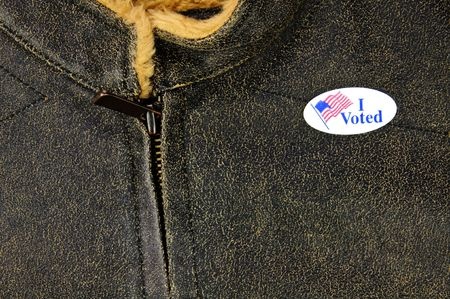The Alaska Division of Elections posted a solicitation to the Alaska Online Public Notice System seeking offers to write an opposing position to Ballot Measure 1, an act allowing for qualified individual to be automatically registered to vote when applying for a Permanent Fund Dividend. The Division received no offers, so they printed the Official Election Pamphlet without an opposing statement.
Here’s a statement that voters might have gotten if the Division of Elections had sincerely endeavored to get the position of the loyal opposition:

Ballot Measure 1 would automatically enroll Alaskans as voters when they apply for their Permanent Fund Dividend.
The estimate to maintain the program is more than $1.2 million every four years. Ten temporary state employees will be required. There are other expenses associated with the program, but monetary costs are not the biggest concern.
The Alaska Constitution speaks to Alaskans’ rights and responsibilities: Alaskans have the right to vote, but along with that comes the responsibility to be engaged, informed, and involved enough to take the one step needed to cast a ballot: You must register to vote.
It is not hard to accomplish voter registration. “Motor voter” has improved voter registration access because people can register when they apply for a driver’s license or official state identification. Voter registration is widely accessible in every part of the state; people can register online, by mail, at libraries, or at any government office. There are no barriers that need to be overcome.
But Ballot Measure 1 makes voter registration automatic, fundamentally changing the relationship between Alaskans and their government, requiring no responsibility from people other than to apply for a Permanent Fund dividend.
Further, the voluntary voter registration activity is a cornerstone check-box item for the personnel at the Permanent Fund Division to establish a person’s residency.
By making voter registration universal, it actually removes a key test of a person’s dividend eligibility.
Many individuals do not have rent or utility receipts in their own name, and may not even have a state-issued identification.
An example of this is a military spouse who is a stay-home mom, who may have no other means to establish residency other than voluntarily registering to vote.
People have to take an action, in other words, to establish that they are a resident. Registering to vote is one such action. If registering to vote becomes non-voluntary process, the Division cannot use it any longer to qualify an individual. This will likely require either a change in statute or regulatory changes.
How can we be certain that the Division of Elections, which has already demonstrated it has problems ensuring free and fair elections, will adequately verify voter eligibility? And why is there such a push to automatically register the 70,000 people who evidently have no interest in voting?
The answer is voter fraud. With 100 percent of adult Alaskans registered to vote, we will witness a lot more voter fraud as groups with an agenda will quickly figure out how to vote those ballots that are now going to low-information and lower-propensity voters.
Fraud is a real concern. In 2013, New York state investigators went to 63 polling places and assumed the names of individuals who had died, moved away, or who were in jail. 97 percent of the time those undercover investigators were allowed to vote. In rural Alaska, the most recent primary election has peeled back the problem of widespread double voting, overuse of personal representatives in voting, and even a lack of privacy with voting booths.
Once everyone is automatically registered to vote, the universality of voter rolls means voting will, in time, become an underground commodity market, where ballots are the currency that special interest groups find a way to control.
For another perspective on why you should vote no on Ballot Measure 1, read Paul Jenkins’ column at the Alaska Dispatch News.
